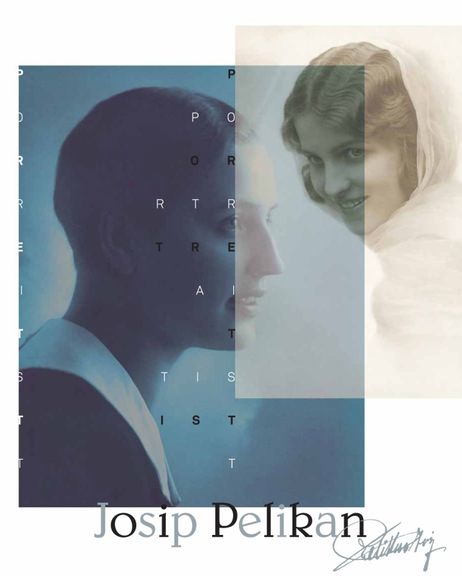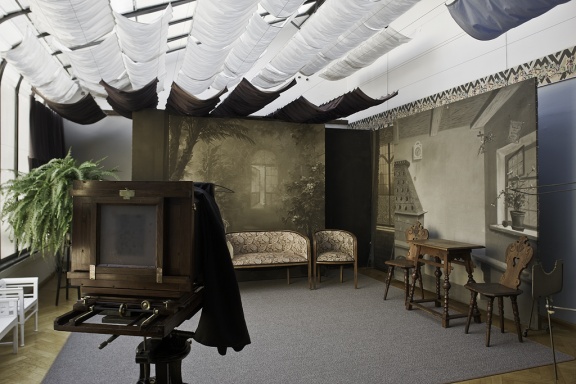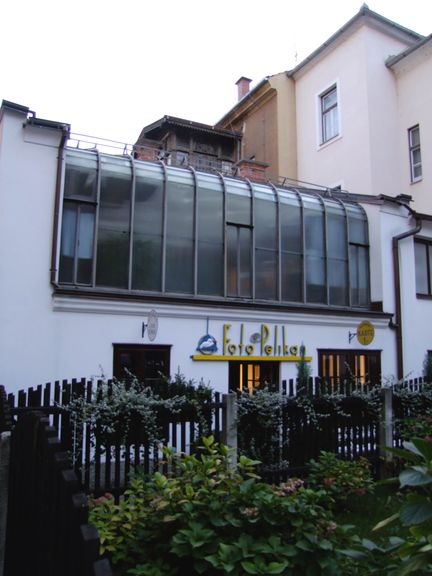Difference between revisions of "Josip Pelikan Photographic Studio, Celje"
(peterlin reviving the studio; added) |
|||
| Line 33: | Line 33: | ||
The museum display presents a special collection containing historic photographic equipment, including travel cameras, mobile study cameras, studio lenses and backgrounds. Original photography of various formats, negatives and glass photographic plates show mainly portrait, studio, industry and mountain motives. There are around 50,000 photographs and 10,000 negatives in the collection and [[Celje Museum of Recent History]] opened an exhibition of selected material in December 2009. | The museum display presents a special collection containing historic photographic equipment, including travel cameras, mobile study cameras, studio lenses and backgrounds. Original photography of various formats, negatives and glass photographic plates show mainly portrait, studio, industry and mountain motives. There are around 50,000 photographs and 10,000 negatives in the collection and [[Celje Museum of Recent History]] opened an exhibition of selected material in December 2009. | ||
| + | |||
| + | Once a month the studio has been revived by [[Borut Peterlin]], a professional photographer and an enthusiastic researcher of old photographic techniques. | ||
}} | }} | ||
Revision as of 08:57, 14 May 2014
-
to
7 Aug 2015
30 Sep 2015
An exhibition of the works of photographer Josip Pelikan from the collection of the Celje Museum of Recent History
-
to
1 Mar 2011
30 Apr 2011
Background
The studio was first established by Johann Martin Lenz, a photographer based in Celje, who had this studio built in 1899, with three workrooms on the ground floor and a metal-and-glass structure on the second floor. The studio was heated, enabling the photographer to work in it all year round. In 1919 the house and studio were purchased by Josip Pelikan. The photographer left behind much high-quality documentary material from the time he lived in Celje between 1919 and 1977. He was the official photographer of the city of Celje and of the health centres of the region in the first half of the 20th century, for example, the spas Rogaška Slatina, Dobrna, and Rimske toplice. During Second World War he documented suffering and war atrocities that were forced upon people of Celje region. After the war he committed himself to landscape photography. At that time he was one of the best Yugoslav professional photographers and a strict mentor to his followers, teaching the traditional photography techniques of wet and dry glass negatives, retouching, and manipulation of white photo paper.
See also
External links
- Josip Pelikan Photographic Studio website
- Panoramic view of Josip Pelikan Photographic Studio, Slovenia Landmarks by Boštjan Burger
- Josip Pelikan's photographies in the digital archive, DLib.si - Digital Library of Slovenia
Gallery
 <small class="imgdesc">Josip Pelikan Photographic Studio, preserved studio the famous Slovene photographer Josip Pelikan (1885 - 1977), established as a museum in 1989, Celje.), established as a museum in 1989, Celje. +
<small class="imgdesc">Josip Pelikan Photographic Studio, preserved studio the famous Slovene photographer Josip Pelikan (1885 - 1977), established as a museum in 1989, Celje.), established as a museum in 1989, Celje. +




